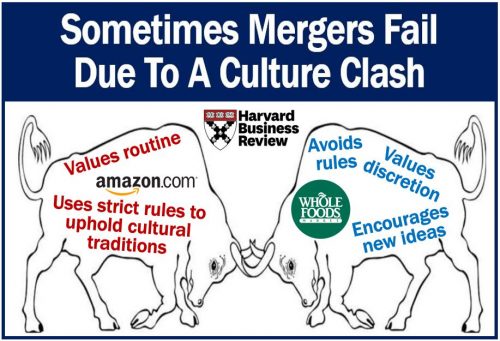Mergers fail for various reasons. The market may suddenly change or a rival launches an incredible product. Also, sometimes mergers fail because the cultures of the two companies are not compatible.
Michele Gelfand and colleagues carried out a study on why mergers fail. Gelfand is a Distinguished University Professor at the University of Maryland.
The team wrote about their study and findings in the journal Harvard Business Review (citation below). Co-authors were Virginia Choi from the University of Maryland, Chengguang Li from the University of Western Ontario, and Piotr Prokopowicz from the Jagiellonian University in Poland.
Co-author Sarah Gordon has recently finished a research assistant position with Prof. Gelfand. She now works in community development in Lod, Israel.
A merger is a fusion of two companies, i.e., when two companies ‘get married.’ Technically, a merger is a marriage of equals in the corporate world. When one company acquires the other, we call it an acquisition or takeover. It is common today, however, for people to use the terms ‘merger’ and ‘acquisition’ interchangeably.

Amazon’s takeover of Whole Foods
When Amazon acquired Whole Foods, there was a lot of media attention. Amazon said the acquisition would allow it to grow beyond e-commerce. It would also allow the online retail giant to gather considerable shopping data.
Whole Foods, whose sales had been declining, would be able to lower its prices. It would also be able to scale up.
However, twelve months later, reports have started to emerge of Whole Foods workers crying on the job. According to the authors, some Whole Foods employees have even explored the possibility of unionizing.
Risk that mergers fail if compatibility ignored
Amazon and Whole Foods have different cultures. Many mergers fail because of a culture clash.
In an Executive Summary that precedes the main article in the journal, the authors wrote:
“The two companies failed to investigate their cultural compatibility before merging, and now they stand on a fault line researchers call tightness versus looseness.”
Amazon’s culture vs. Whole Foods’
Amazon’s tight company culture values routine. The company uses strict rules to uphold cultural traditions.
Whole Foods’ culture, on the other hand, is much looser. The company deliberately avoids rules and encourages new ideas. It also values discretion.
When Amazon acquired Whole Foods, there was a merger of loose and tight cultures. When loose and tight cultures merge, there is a serious risk that they will clash.
However, it is possible to handle the clashes and overcome them if they are detected and diagnosed early. In other words, if the two companies investigate their cultural compatibility before the merger happens, the merger can eventually succeed.
How to avoid pitfalls
Sometimes, mergers fail because the two companies did not prepare properly. To avoid the problems that Whole Foods and Amazon are currently experiencing, the authors advise merging companies to:
– Be prepared to negotiate corporate culture from the beginning. It is important to identify areas for compromise.
– Create a prenup. It should outline the merging companies’ integration plan.
– Tell all employees what is going to change and why. Make sure they understand.
– Everything has a learning curve. “Embrace trial and error,” say the authors.
Citation
“One Reason Mergers Fail: The Two Cultures Aren’t Compatible,” Michele Gelfand, Sarah Gordon, Chengguang Li, Virginia Choi, and Piotr Prokopowicz. Harvard Business Review – October 02, 2018.

